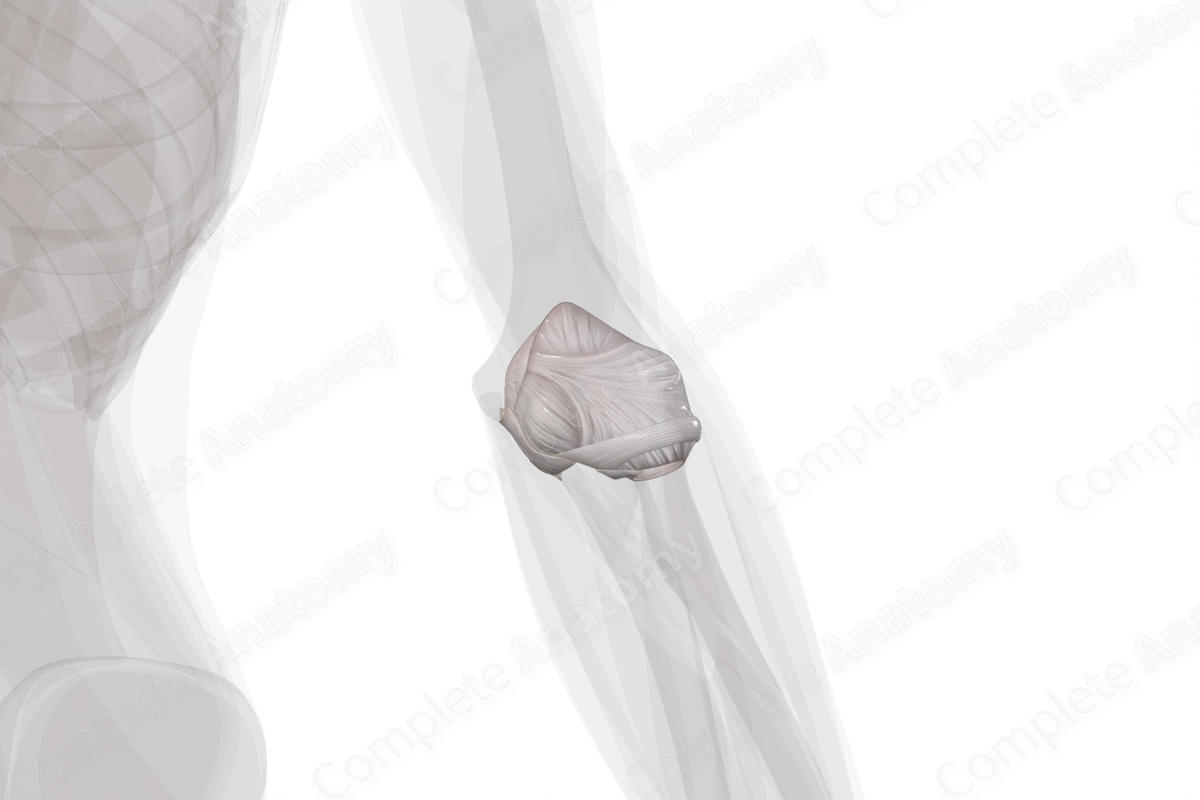
Description
The elbow or cubital joint is essentially a complex of three joints, including the humeroulnar, humeroradial, and proximal radioulnar joints. The humeroulnar and humeroradial joints form a complex hinge joint that allows flexion and extension of the forearm, while the humeroradial joint, along with the proximal radioulnar joint, facilitates pronation and supination of the forearm.
The humeroulnar joint is formed by the articulation of the trochlea of the distal humerus with the large trochlear (or semilunar) notch of the ulna. Its stability is reinforced by the medial and lateral collateral ligaments and by the anterior articular capsule in full extension.
The humeroradial joint is formed by the articulations of the convex capitulum of the distal humerus with the concave articular facet of the head of the radial. This forms a limited ‘ball-in-socket’ type synovial joint. The annular ligament ensures stability of the head of the radius within this joint.
The proximal radioulnar joint is a uniaxial pivot synovial joint between the head of the radius and the radial notch of the ulna. The joint is stabilized by the annular and quadrate ligaments.
List of Clinical Correlates
—Subluxation of the humeroradial joint (nursemaid’s elbow)




